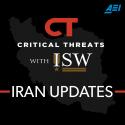Russian Offensive Campaign Assessment, October 6, 2023
Oct 6, 2023 - ISW Press
Ukrainian forces continued counteroffensive operations near Bakhmut and advanced in western Zaporizhia Oblast on October 6. Ukrainian military sources noted that Ukrainian forces continued successful offensive actions south of Bakhmut near Andriivka (8km southeast of Bakhmut). Geolocated footage posted on October 5 shows that Ukrainian forces have advanced towards a tree line between Robotyne and Verbove, about 6km southeast of Robotyne. Ukrainian Eastern Group of Forces Spokesperson Captain Ilya Yevlash noted that Ukrainian forces are preparing for offensive operations throughout the autumn-winter period. Yevlash emphasized that while supply requirements will increase and rainy and foggy conditions may complicate the use of drones and tactical and army aviation, Ukrainian forces will continue to fight through the winter. Yevlash’s statement supports ISW’s longstanding assessment that weather will not prevent either side from conducting offensive operations throughout the winter of 2023-2024 if they are well-supplied and choose to do so, as they did in the winter of 2022, and that the pace of Ukrainian offensives will be in large part be metered by Western provision of appropriate small-arms and ammunition and non-lethal supplies to Ukraine - not simply winter weather conditions or any specific weapons system.










